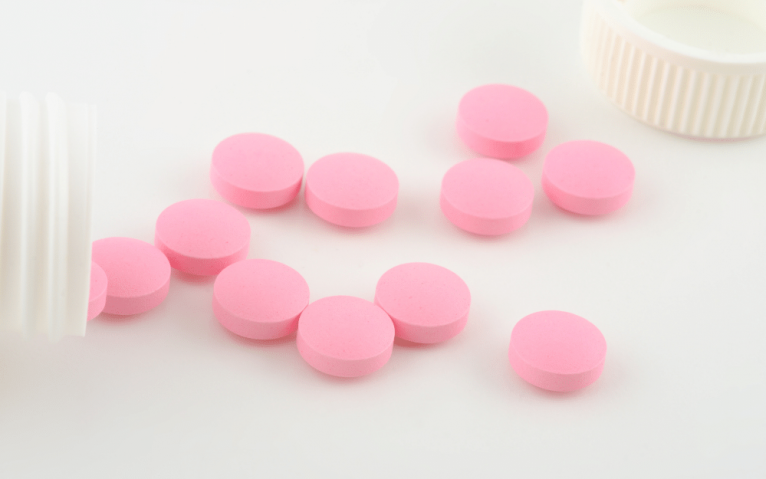Suboxone is the brand name of buprenorphine and naloxone. Buprenorphine is an opioid medication, while naloxone blocks the effects of opioid medications, including the feelings of well-being that often lead to abuse. Suboxone is also a conventional treatment for narcotic addiction. Still, some suboxone addiction statistics prove the dangers of this program.
What is Suboxone?
Suboxone is a drug approved by the FDA in 2002 for the treatment of chronic opioid abuse. The active ingredients in Suboxone are buprenorphine and naloxone.
Buprenorphine is a partial opioid agonist. It binds with the opioid receptors in the brain, resulting in a decrease in pain. It halts withdrawal symptoms and reduces the craving for opiate-based drugs such as heroin.
Naloxone fills opioid receptors and prevents other drugs from activating them. Unlike other medications for detox from opiates, Suboxone includes naloxone, which might help prevent users from drug misuse in the future.
Both are proven to be effective in treating the symptoms of opioid withdrawal. However, both can cause addiction.
3 Interesting Suboxone Addiction Facts You Should Know
Overall, suboxone addiction is a highly debated topic in the healthcare field. For starters, Suboxone is meant to treat opioid addiction by reducing cravings for opioid drugs. Still, there’s a possibility that some users will become addicted to Suboxone and have another issue on their hands.
1. Suboxone Does Not Get You High
When someone uses Suboxone following instructions, it cannot get them high. However, those who abuse Suboxone might be able to get a high out of it. Still, taking the drug intravenously provides the most significant Suboxone high possible because this method bypasses the digestive system, which activates naloxone.
2. People Can Overdose on Suboxone
Though Suboxone is meant to prevent overdose, it can still happen when people misuse the medication. An injection is the most dangerous way to use Suboxone, but people can overdose using strips, pills, and every other formulation in high doses.
Overdose is essentially poisoning. When an abuser takes such a high dose of Suboxone that the body cannot metabolize it fast enough, the drug essentially poisons the body.
3. Suboxone Withdrawal Can Occur
Opioid dependence happens with any long-term opioid use, even if people follow doctors’ orders. Once they become physically dependent on a drug, withdrawal symptoms are bound to happen when the drug leaves their system. Withdrawal from Suboxone isn’t as intense as other opioids. It can still cause withdrawal symptoms like muscle aches, nausea, tremors, anxiety, and restlessness.
Those who are taking Suboxone to treat other addictions will experience less severe symptoms and side effects. However, these withdrawal symptoms are still uncomfortable and increase the risk of relapse and potential overdose.
Suboxone Addiction Statistics
There’s no doubt that addiction is a major problem among younger users. However, because Suboxone is usually a medication-assisted treatment, statistics about its addiction aren’t as specific as other drugs.
- Some studies say only 9% of participants in a study completed the taper and remained opiate-free. Other studies show that 60% of patients stayed opiate-free for over 40 months.
- As of 2017, only about 35,064 of the 800,000 physicians in the United States (3%) have the necessary credentials to prescribe buprenorphine for addiction.
- In 2018, police in just one city, Cincinnati, confiscated over 6,000 doses of illegal Suboxone.
- More than three million Americans have received Suboxone treatment.
- Also, in 2010, nearly 60% of buprenorphine-related ER visits involved other drugs.
Treatment Options for Suboxone Addiction
While Suboxone isn’t incredibly addictive, those willing to break the addiction cycle can seek treatment for opioid abuse. Because cutting cold turkey can be hazardous, it’s best to start with a partial hospitalization program (PHP) and a detox process to prevent severe withdrawal symptoms such as anxiety and tremors. It’s paramount that people find an addiction center to treat their abuse.
Speaking with an addiction treatment specialist as soon as possible is the best way to start seeking help for addiction. At Lighthouse Recovery Institute, our drug addiction recovery programs include:
- Medical Detox: In this clinically supervised detox process at treatment centers, we ensure the patient’s safety and make the withdrawal phase as comfortable as possible by minimizing withdrawal symptoms and using medication-assisted treatment services to guarantee a complete detoxification process.
- Dual Diagnosis Treatment: Since many long-term addicts often struggle with mental health disorders, a dual diagnosis program treats both conditions simultaneously.
- Cognitive Behavioral Therapy: Most of the time, these sorts of addictions develop due to compulsive behaviors. CBT is the go-to treatment to help with addiction.
- Intensive Outpatient Treatment Programs: When patients seek addiction treatment while maintaining daily obligations like work, school, or caregiving, IOPs are a more flexible option that still gives people access to the help they need.
- Long-term Recovery Programs: With long-term recovery assistance, patients can have the ongoing support they need to maintain long-lasting sobriety. Recovery programs are crucial to relapse prevention.
Get Help Today
If you or someone you love is struggling with Suboxone addiction or other prescription medications, seek help immediately. Contact Lighthouse Recovery Institute today and speak with our addiction specialists about our comprehensive and personalized addiction treatment.
We believe in treating each patient in a case-by-case scenario because no two addiction stories are alike. Start walking towards your recovery, and we’ll be here supporting you and your family every step of the way. Please don’t wait another day to start addiction treatment, primarily when your life depends on it.









